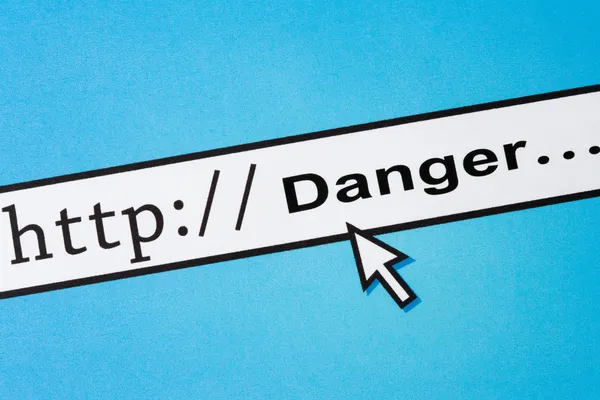
Safety in a Digital World: Protecting your Children in the Age of Technology
Many parents feel overwhelmed about their child's safety online. It takes a lot of work to keep track of what they're doing, what sites they're visiting, and who they're talking to. There are some things you can do to help ensure your child's safety while browsing the Internet. In this article, we cover some of those to give you a solid foundation to build your own online child safety protection plan from.
In this article, we are going to discuss the following:
Talking to your kids about the dangers of the Internet
Staying informed
Setting rules
As kids get older
Using password management tools
Content
Safeguard tips and guidelines for safer internet use
Talk to your kids about the dangers of the Internet
A great place to start is by talking to your kids about the dangers of the Internet. Explain that not everyone online is who they say they are and that there are people out there who want to hurt them. Teach them to protect themselves by not sharing personal information with strangers, not opening emails from unknown senders, and using strong passwords.

Stay informed
Have a plan to stay informed and be aware of which sites and apps your child is using. Talk to them about why they like certain ones and what they do with and on them. If there are any sites or apps you don't feel comfortable with, talk to your child about why and find alternatives. Google has a Safety Center site with sections dedicated to helping parents manage what is suitable for their families. Common Sense Media also has a selection of content on this as well.
Set rules
Set rules for how much time your child can spend online. These rules will vary depending on their age and what sites they're using, but a good rule of thumb is no more than two hours a day. Always make sure they take regular breaks from the computer or phone screen, especially if they get headaches or eye strain.

As they get older
While the tips and suggestions above apply to all ages of children, as kids get older, it becomes more important for parents to keep track of their online activities.
While many teens want privacy as they grow and become more independent, however, there are dangers lurking on the internet that parents need to be aware of that many teens are not aware of.

One such danger is interacting with strangers. Kids of all ages, including teens, should be taught not to give out personal information like their name, address, or school name to anyone they don't know online. They should also be warned about the possibility of scams, sexting, and cyberbullying and educated about these topics, what to look out for, and how to handle them if they encounter them themselves.
Many times teens especially think they are smart enough to handle this on their own. Predators know this about them and use it to their advantage. Because have a greater independence over younger children, they will be online and using apps when you are not around. Even if it’s not in your house, there are times that they’ll be unsupervised. Times like at school, work, and at friends' houses.

Having an open relationship with your teens so they feel comfortable coming to you and educating them enough to recognize when something seems off, are steps you can take to help them be safer online and when using technology. Some phones have built-in parental controls, like the Bark Phone, which isn’t a clunky “kid’s phone” that'll embarrass teens and tweens.
The topics and tips we’ve covered so far are a great starting place to help you keep your child safe online while still allowing them some freedom to explore the virtual world. But just as the internet is constantly changing, so are its dangers. Staying informed and being aware of those ever-changing dangers are essential steps to ensure you take. Protect Young Eyes has a quick online survey you can use to see how safe your home is. Just answer ten short questions, and they’ll help you begin your journey toward creating an internet-ready home. Since 2015, they've helped families build homes that are free from porn, predators, and problems.
Password management tools

Another element of online safety is privacy and data security.
Parents should create passwords for their children's devices and accounts and educate them to ensure they are not sharing them with anyone. This also give parents access to those accounts enabling them to see how they are being used which helps prevent usage from being hidden and encourages accountability.
Using a password management tool like 1Password, LastPass, or another platform you feel comfortable with is a great way to share passwords and protect your and your family's personal and secure online information.
Content
We couldn't write an article about child safety online without mentioning online content. It's important to talk about appropriate and inappropriate content for different ages. Parents should be aware of the websites their kids are visiting and the apps they are using. There are tools out there that will allow you to monitor what content is being consumed and have control over restricting or blocking access to inappropriate content.
Most phone operating systems have abilities to do this built into them. Articles like this one from Consumer Reports cover their use.
You can also get other 3rd party applications like Bark, Circle, Covenant Eyes, or FamilyTime. We’d urge you to do your research and see which one would best suit your needs.
There are many helpful tools and resources available for parents who want to keep their kids safe online. The Federal Trade Commission (FTC) website offers a variety of tips for parents, including how to set parental controls on devices and create strong passwords. The website Get Safe Online also provides guidance for parents on how to protect their children from online dangers.
General tips and guidelines
Tired of reading? Love lists? Here are some tips and basic guidelines in list form to help keep your kids safer online.
1. Spend time online together to teach your kids appropriate online behavior.
2. Keep the computers and phones in a common area where you can watch and monitor their use, not in individual bedrooms and behind closed doors. Set the example and do this yourself.
3. Monitor any time spent on smartphones or tablets, and try to reduce the amount of time your family is looking at screens.
4. Bookmark kids' favorite sites for easy access to prevent them from searching.
5. Check your credit card and phone bills for unfamiliar account charges.
6. Find out what, if any, online protection is offered by your child's school, after-school center, friends’ homes, or any place where kids could use a computer without your supervision.
7. Take your child seriously if he or she reports an uncomfortable online exchange.

We can’t say it enough. One of the most important things parents can do is to be informed about the risks their children may face when using the internet.
There are a variety of online risks that children may be exposed to, including cyberbullying, pornography, and sexual predators. Being informed about the risk and implementing safeguards to limit the likelihood of your child being exposed is the first line of defense.
Here is a five-step plan that you can use to help guide you in this process:
1. Understand the risks: talk to other adults or use online resources for information on the risks involved with any online platform.
2. Communicate regularly: ask your children about their online usage and stress the importance of being private online.
3. Keep the risks in proportion: consider what the benefits are compared to the risks.
4. Agree on helpful mediation strategies: speak with your child about what can be done if they find themselves in a risky situation online. This could include talking to a trusted adult or leaving the platform or website entirely.
5. Take action: put safeguards in place, like we’ve mentioned, to limit your child's exposure to risky content and situations. Again, this could include using parental controls or filtering software, having regular conversations about internet safety, and monitoring your child's online activity.
Wrap up
As we’ve covered, the internet is a vast and ever-changing entity, with new platforms and applications constantly emerging. While much of the internet can be beneficial and educational for children, it also contains many risks that parents should be aware of. At Dweeb, we want to help people live safer, more informed lives, and that goes beyond just background checks.

Dweeb
If you haven’t yet, we urge you to download the Dweeb app and try it.
Dweeb is a free app that let's you quickly verify that someone is who they say they are with free reverse phone searches. Find out more for less than $1 per search by adding 10 advanced searches per month for $9.99/mo to access any other linked phone numbers, addresses, property records, or publicly available criminal data & more.


